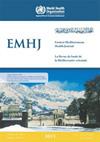沙特阿拉伯的肥胖症流行病学和控制干预措施
IF 1.9
4区 医学
Q3 HEALTH CARE SCIENCES & SERVICES
引用次数: 0
摘要
背景:过去 40 年来,包括沙特阿拉伯在内的海湾合作委员会国家的超重和肥胖发病率有所上升。尽管世界卫生组织鼓励各国实施旨在控制肥胖的措施,但有关此类措施在沙特阿拉伯的影响的研究成果却十分有限。目的:评估沙特阿拉伯超重和肥胖的流行病学,描述和评估过去和当前干预措施的效果,并提出预防和控制行动建议。方法:对来自全球健康观察站的数据进行叙述性回顾,以确定 1975 年至 2016 年沙特阿拉伯超重和肥胖症流行率的年度估计值。确定并总结了沙特阿拉伯旨在控制肥胖及其风险因素的大规模干预措施。结果:从 1990 年到 2019 年,沙特阿拉伯男性和女性超重和肥胖的流行率持续上升。成年人中的患病率超过 60%,儿童和青少年中的患病率为 20-60%,表明这一趋势仍在继续。干预措施已经确定,但其对预防和控制肥胖及其风险因素的影响尚不明确。结论自 1975 年以来,沙特阿拉伯超重和肥胖的流行率一直在稳步上升。要在该国实现肥胖症的可持续预防和控制,需要采取 "全社区 "综合方法,并进行持续评估。本文章由计算机程序翻译,如有差异,请以英文原文为准。
Epidemiology of obesity and control interventions in Saudi Arabia
Background: Prevalence estimates for overweight and obesity in the Gulf Cooperation Council countries, including Saudi Arabia, have increased over the last 4 decades. Although the World Health Organization encourages countries to implement initiatives aimed at controlling obesity, limited research has been published on the impact of such initiatives in Saudi Arabia. Aims: To assess the epidemiology of overweight and obesity in Saudi Arabia, describe and evaluate the effectiveness of past and current interventions, and recommend actions for prevention and control. Methods: A narrative review of data from the Global Health Observatory was used to determine yearly estimates of prevalence of overweight and obesity in Saudi Arabia from 1975 to 2016. Large-scale interventions aimed at controlling obesity and its risk factors in Saudi Arabia were identified and summarized. Results: Prevalence estimates of overweight and obesity among men and women in Saudi Arabia continued to increase from 1990 to 2019. Prevalence among adults was more than 60% and among children and adolescents it was 20–60%, suggesting a continuing trend. Interventions were identified but their impact on the prevention and control of obesity and its risk factors was unclear. Conclusion: Prevalence estimates of overweight and obesity have been steadily increasing in Saudi Arabia since 1975. Integrated, “whole-of-community” approach, with continuous evaluation, is needed to achieve sustainable prevention and control of obesity in the country.
求助全文
通过发布文献求助,成功后即可免费获取论文全文。
去求助
来源期刊

Eastern Mediterranean Health Journal
HEALTH CARE SCIENCES & SERVICESPUBLIC, ENV-PUBLIC, ENVIRONMENTAL & OCCUPATIONAL HEALTH
CiteScore
3.30
自引率
4.80%
发文量
112
期刊介绍:
The Eastern Mediterranean Health Journal, established in 1995, is the flagship health periodical of the World Health Organization Regional Office for the Eastern Mediterranean.
The mission of the Journal is to contribute to improving health in the Eastern Mediterranean Region by publishing and publicising quality health research and information with emphasis on public health and the strategic health priorities of the Region. It aims to: further public health knowledge, policy, practice and education; support health policy-makers, researchers and practitioners; and enable health professionals to remain informed of developments in public health.
The EMHJ:
-publishes original peer-reviewed research and reviews in all areas of public health of relevance to the Eastern Mediterranean Region
-encourages, in particular, research related to the regional health priorities, namely: health systems strengthening; emergency preparedness and response; communicable diseases; noncommunicable diseases and mental health; reproductive, maternal, child health and nutrition
-provides up-to-date information on public health developments with special reference to the Region.
The Journal addresses all members of the health profession, health educational institutes, as well as governmental and nongovernmental organizations in the area of public health within and outside the Region.
 求助内容:
求助内容: 应助结果提醒方式:
应助结果提醒方式:


